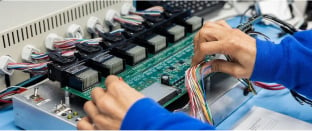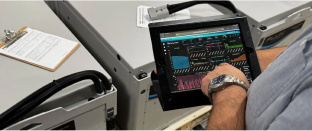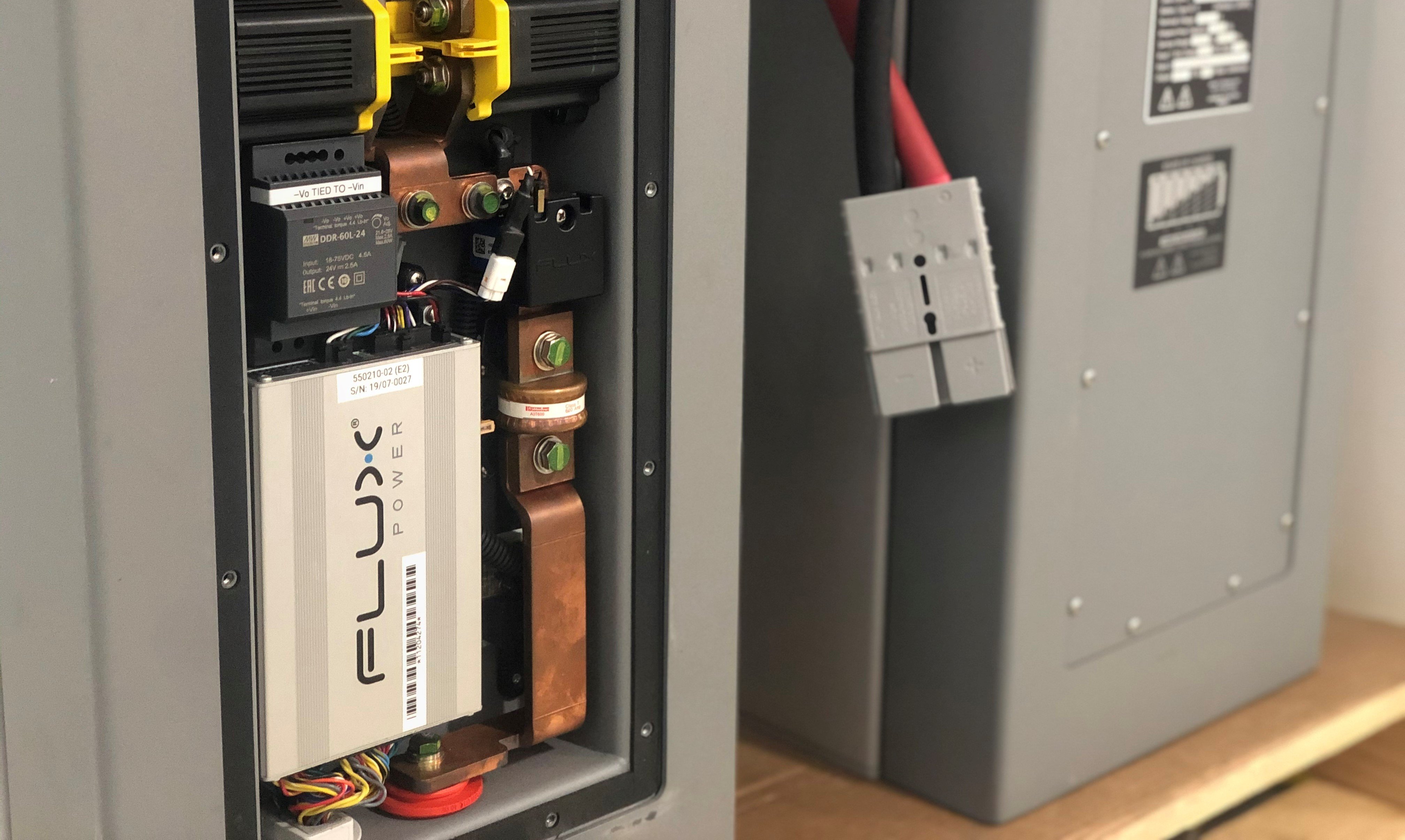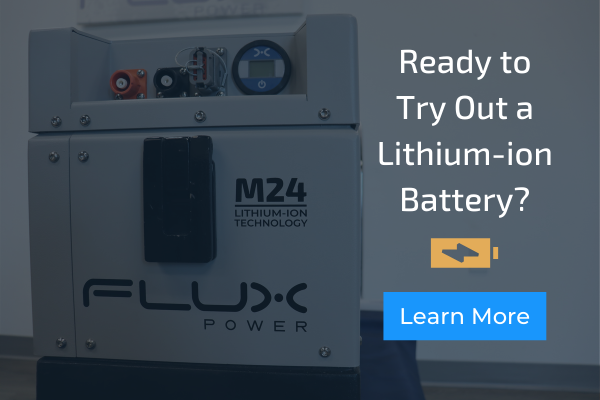What is a BMS (Battery Management System)?
A BMS is a system that manages lithium-ion battery packs through integrated firmware and hardware. When paired with telematics, it provides real-time data on the status and health of a forklift battery.
A typical battery management system usually consists of functions such as:
- Fuel-gauge monitor
- Cell voltage monitor
- Cell voltage balancer
- Temperature monitor
Each of these components plays a role in protecting a lithium-ion battery from many different issues that could arise.
In this blog, we will emphasize the function of a battery management system and explain why it is a necessary part of your lithium-ion battery.
Battery Balancer vs. BMS for Lithium-Ion Battery Packs
Not all lithium-ion batteries have or need a battery management system. Some lithium-ion batteries employ battery balancers that only optimize cell voltage and protect from over and under current while charging.
Battery balancers are found in different lithium-ion battery applications such as laptop computers. The only purpose for a battery balancer is to ensure the cells in a battery have an equal state of charge.
On the other hand, a BMS will almost always be used in batteries that power industrial equipment. A BMS is needed to monitor important parameters such as environmental temperatures or a battery’s state of charge in operations.
Because the lithium-ion cells differ in capacity when manufactured, each cell might be at a different state of charge.
Battery balancers and BMS will both distribute an equal charge to each cell within a lithium-ion battery. The downside to a battery balancer is that it has limited functionality compared to a battery management system. A battery balancer cannot monitor other important parameters such as:
- Variations in temperatures
- Over-charging and over-discharging
- The state of charge
Compared to a battery balancer, a battery management system can do more than just balance a battery. A BMS is designed to manage temperature variations, charging habits, state of charge.
A BMS has two methods for balancing lithium-ion cells:
Active Balancing – The BMS distributes charge from high charged cells to low charged cells.
Passive Balancing – The BMS drains the high charged cells first and allows all cells to have the same state of charge.
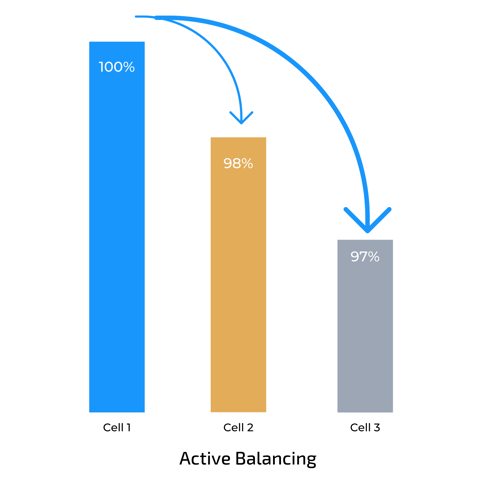
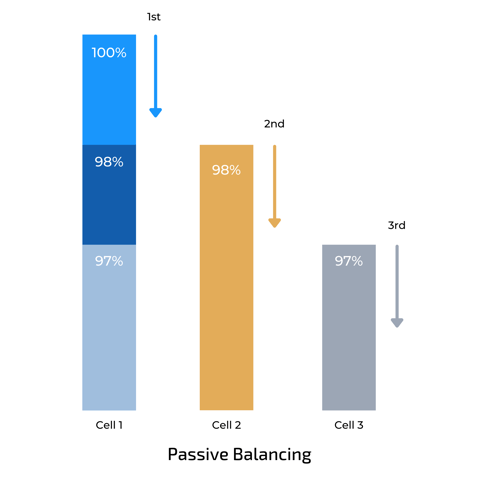
Both methods balance the state of charge, but there are pros and cons to each. Balancing the charge across a multi-cell battery pack is crucial to maximize cycle life. A BMS not only protects lithium-ion forklift batteries while charging, but also provides real-time data on a forklift battery’s health and state of charge.
Optimize Fleet Usage with a Battery Management System
A battery management system can ease the burden of in-house forklift fleet management by providing real-time data for preventive maintenance.
Paired with a telematics unit, data from the BMS can be accessed via the cloud to provide insight on forklift utilization patterns.
Remote monitoring can catch problems before they become catastrophic, reducing, or eliminating truck downtime.
Because the BMS tracks temperature, charging status, and battery usage, extracting that data yields insights into the warehouse operations. For example, a closer look into the data might reveal the need to balance workloads across multiple forklifts or fix opportunity charging habits.
Understanding forklift battery data can help operation managers make informed decisions about how they can reduce the total costs of batteries in their fleets.
Maximize Forklift Fleet Uptime with a BMS for Lithium-Ion Battery Packs
Lead acid batteries do not have a BMS to help notify the forklift operator if something is wrong with the battery.
Lead acid batteries require significant maintenance to maximize its battery usage. This creates unnecessary downtime which can interrupt productivity and raise labor costs.
Some maintenance steps can include:
- Watering the battery every one to two weeks
- Checking the water to make sure it is between 5 and 7 on the pH scale
- Equalizing the cells regularly and ensure temperatures are controlled throughout the charging process
Lithium-ion technology, on the other hand, can be maintained through the BMS. The BMS automates the process making it a huge advantage over the potentially dangerous practice of equalizing charges for lead acid batteries.
The battery management system will keep track of the lithium-ion battery’s state of charge, and it will alert the forklift operator if the battery has a low state of charge.
BMS data can indicate a potential problem that can be addressed before it becomes catastrophic. A battery management system integrated with telematics technology can simplify fleet maintenance.
These battery management system capabilities combined with the improved performance that lithium-ion technology delivers, make lithium-ion batteries an attractive investment.

